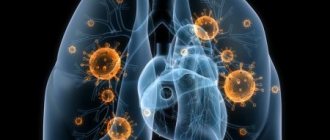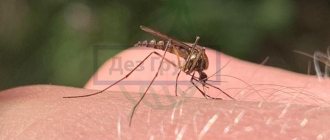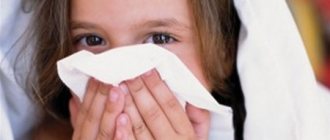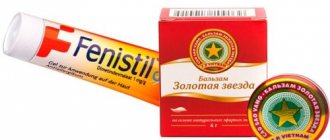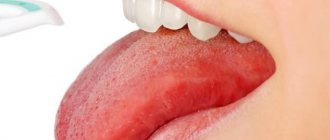general description
An allergic reaction to the bites of blood-sucking and stinging insects occurs due to the body's hypersensitivity to the components of saliva, poison and other substances that enter the human body upon contact with insects.
The type of allergic reaction can be either immediate or delayed. Clinically, this pathology is manifested by redness, swelling, and itching at the site of the bite. In severe cases of allergies, severe complications can develop (Quincke's edema, anaphylactic shock), which in the absence of timely medical care can lead to death.
Diagnosis of this type of allergy is complex. Therapy includes removing the allergen from the patient’s body or slowing its absorption into the blood, taking antihistamines, anti-shock measures, and ASIT.
Complications possible after an insect bite
The first two types of reactions are a normal immune system response to toxins that enter the bloodstream from a bite and do not require special treatment unless they develop more severe symptoms over time. Local reactions may require consultation and examination with an allergist if the swelling becomes more pronounced with each subsequent insect bite.
But an allergic reaction - both moderate and acute - can cause more severe conditions that require qualified help.
An acute form of allergy to an insect bite can cause angioedema, a critical decrease in blood pressure, heart rhythm disturbances - conditions that, without proper and timely assistance, can lead to serious consequences.
But a moderate allergic reaction is also a kind of alarming signal. Even mild allergy symptoms that are not particularly disturbing are a sign of the body’s hypersensitivity to an insect bite. If you neglect your own health and do not pay due attention to minor symptoms, with each insect bite the immune system will receive more and more “injuries”. And a moderate reaction after some time can manifest itself with increasingly severe symptoms until it transforms into a constantly occurring acute allergic reaction.
↑ Return to contents
Causes
Most often, the development of allergies to insect bites is caused by a hereditary predisposition. This hypersensitivity of the body persists throughout a person’s life, and with each new insect bite the clinical picture becomes more and more severe.
In addition to heredity, the following factors can provoke the development of allergies to insect bites:
- the patient has a history of chronic somatic diseases;
- unhealthy diet - abuse of fast food and other unhealthy foods high in flavors, artificial colors, preservatives;
- bad ecology;
- work in hazardous industries and a number of others.
The body reacts most strongly to the bites of hornets, wasps, bees, and bumblebees. The reaction to the bites of blood-sucking insects (bugs, mosquitoes, fleas, mosquitoes) is much weaker.
First aid for a gadfly or horsefly bite
How to help and what to do if you are allergic to horsefly bites? The algorithm of actions when providing first aid should be as follows:
- Apply pressure to the damaged area to prevent insect saliva from spreading into the skin.
- Relieve swelling if you are allergic to a bite by applying a piece of ice or any cold object to it. Keep the ice compress on for about half an hour to achieve maximum effect.
- Wash the wound with laundry or regular soap.
- Next, you need to disinfect the damaged area with any antibacterial agent: alcohol, hydrogen peroxide, Chlorhexidine.
Whether you need to see a doctor depends on the number of bites inflicted and the severity of allergic symptoms. If there are no complications, treatment is carried out at home.
Symptoms of an allergy to insect bites
Insect allergies can occur in absolutely anyone. True, for most people this passes without any special consequences. Hospitalization and inpatient treatment are not required; taking medications is also not always necessary. Swelling, redness and itching at the site of the bite disappear on their own after a few days. This body reaction to a bite is called normal.
In addition, a local and allergic type of reaction is distinguished. With a local reaction, a slight swelling forms at the site of the bite. In some cases, inflammation can spread further (for example, to the entire hand when bitten in the palm). This reaction also goes away on its own within a few hours.
| Allergy to mosquito bites in children | Bee sting allergy |
There are two types of allergic reaction:
1. Acute. It develops rapidly, 5-20 minutes after the bite and is manifested by the following symptoms:
- difficulty breathing, feeling of suffocation;
- dyspnea;
- tachycardia or arrhythmia;
- hives, which quickly spreads from the site of the bite throughout the body;
- perspiration on temples, forehead;
- swelling of the lips, neck, face;
- a sudden rush of blood to the face followed by anemia;
- fear, anxiety, restlessness, increased nervous excitability;
If this type of allergy develops, it is necessary to immediately call doctors and provide first aid to the person.
2. Moderate. It develops several hours after the bite and is manifested by the following clinical signs:
- severe pain at the site of the bite;
- skin itching;
- swelling and redness of the skin at the site of the bite, increased local temperature;
- small rashes that are localized along the perimeter of the edema.
Treatment of allergic urticaria
The action of the allergen that caused the reaction ceases. In addition, the patient should switch to an elimination diet that excludes foods with a large number of allergens (chicken, citrus fruits, nuts, eggs, strawberries, spices, foods with a high content of dyes).
In acute cases of urticaria, antihistamines are prescribed.
READ ALSO: Wen under the eyes: how to get rid of them, reviews, why they appear
In the case of the development of a severe form of the disease, infusion antihistamines, corticosteroids (prednisolone, dexamethasone), calcium preparations that reduce sensitivity to allergens (calcium chloride or gluconate) are used; when the allergen is taken orally, gastric lavage is performed, and activated carbon and other sorbents are also used.
Preventive measures
People who experience attacks of allergic urticaria are also prone to developing urticaria in response to other external factors: light, heat, cold, pressure, mechanical damage to the skin.
To ensure that allergies similar to mosquito bites bother you as little as possible, you should adhere to the following recommendations:
- Avoid stress; on the recommendation of a doctor, it is possible to take mild herbal-based sedatives.
- Avoid allergenic factors to which the patient is hypersensitive.
- Stop smoking and drinking alcohol.
- Be exposed to direct sunlight as little as possible (sunbathing is contraindicated). Also avoid prolonged exposure to high and low temperatures, use creams that protect from ultraviolet radiation and heat, and from cold.
- Take a shower, wash your face and wash your hands only with warm water, using soaps with skin-softening and moisturizing additives, and dry with soft towels.
- Do not take aspirin, codeine, ACE inhibitors.
- Do not use wardrobe items that put excessive pressure on the skin (tight clothing, belts, suspenders). Give preference to cotton clothes.
- Hypoallergenic diet, healthy eating.
- Treat diseases of the gastrointestinal tract and liver, infections in a timely manner.
- Maintaining a daily routine, alternating work and rest.
All this will prevent the occurrence of an attack of hives, which will make life much easier for allergy sufferers.
News MirTesen
Diagnostics
The main diagnostic methods for insect bites are:
- Anamnesis collection, questioning. The doctor is interested in how long ago the bite occurred and what kind of insect bit the patient. In addition, the doctor asks whether the patient or his immediate family has any type of allergy. After this, the specialist examines the bite site, identifies characteristic allergy symptoms, and if foreign objects (for example, a bee sting) are found under the skin, removes them.
- Blood test (general). An increased level of eosinophils is detected, which indicates the development of an allergic reaction in the patient’s body.
- Pressure measurement, ECG. Conducted to determine the general condition of the patient.
- Blood test (biochemical). Possible disturbances in the functioning of internal organs are identified.
- Determination of the level of immunoglobulin E in blood serum. Using this study, it is possible to determine which insect bite led to the development of an allergic reaction.
What not to do?
If a horsefly has bitten an arm, leg or other part of the body, the following is strictly contraindicated:
- Scratching the wound will lead to infection.
- Use warm compresses to avoid causing inflammation.
- Use steroids without the permission of your doctor.
- Do not hesitate to visit a doctor if an insect bites a mole: damage to the nevus tissue can threaten to transform into a malignant form.
Under no circumstances should the bite area be scratched.
Treatment of allergies to insect bites
For a mild allergic reaction, no specific therapy is required. The patient is prescribed antihistamines and given symptomatic treatment aimed at relieving discomfort.
In case of a severe allergic reaction, it is necessary to immediately call an ambulance to hospitalize the patient and provide immediate hospital treatment. If a person is bitten by a stinging insect, then you need to carefully remove the sting from the skin without damaging the sac with poison that is located at its tip.
| Removing the sting from the skin |
Cold is applied to the bite site to reduce inflammation and hyperemia. The patient is placed on a flat surface, with the head and shoulders elevated. If swelling of the neck or face occurs, the patient should not be given tablets or water. Also, you should not give a person alcohol, as it dilates blood vessels, which promotes faster absorption of poison into the body and the development of intoxication.
After the ambulance team arrives, the patient is given emergency treatment. To stabilize breathing, vascular and myocardial function, adrenaline is injected intramuscularly. In addition, injections of antihistamines are indicated. Depending on the clinical picture, other medications may be prescribed (for example, bronchodilators for respiratory spasms).
If the allergy symptoms are not so severe, then local antihistamines in the form of ointments and gels are prescribed. For a more intensive removal of toxins from the body, the use of sorbents is indicated. If allergies develop again, you must take medications prescribed by your doctor.
This planned treatment includes the following steps:
- taking antihistamines in tablets;
- calcium chloride injections;
- taking systemic glucocorticosteroid drugs.
One of the most effective methods of treating insect allergies is ASIT. The essence of this technique is to form an adequate immune response of the body to a specific allergen.
To achieve this goal, the patient is given microdoses of a substance over a long period of time, which in its composition resembles the poison of wasps, bees, and ants. The dosage is gradually increased and, eventually, the body gets used to it and stops reacting to this allergen.
Treatment of insect allergies
If an allergy appears for the first time after an insect bite, the doctor will schedule a consultation with an allergist who will conduct the necessary tests. Such an examination is necessary in order to exclude hypersensitivity to other substances, which often happens with allergies to insects. Based on the results of the examination, you will be assigned an allergic status and appropriate treatment will be prescribed.
Treatment of allergies to insect bites can be divided into two types: emergency and planned.
Emergency treatment is carried out for an acute allergic reaction and consists of the immediate administration of the following drugs:
- epinephrine (adrenaline) to block an allergic reaction;
- saline solution intravenously to stabilize blood pressure;
- calcium preparations (calcium chloride) intravenously to reduce the sensitivity of the immune system;
- bronchodilators (Theophylline) to eliminate breathing problems;
- antihistamines (Suprastin, Claritin, Tavegil, etc.).
Emergency treatment begins from the moment emergency care arrives and continues on the way to the hospital. In the hospital, the patient is placed in an intensive care unit and emergency treatment is supplemented with drugs necessary to maintain cardiac and respiratory function.
Planned treatment is prescribed for moderate and moderately severe allergic reactions. Treatment includes:
- intravenous injections of calcium chloride;
- antihistamines in tablets (Tavegil, Suprastin, etc.);
- hormonal drugs for oral administration (Prednisone, Prednisolone);
If this is not the first time you have had an allergic reaction to an insect bite, your doctor may prescribe immunotherapy, a procedure that corrects the immune response to a specific substance. In the case of insect allergies, the doctor injects the patient under the skin with microdoses of a substance identical to the venom of bees, wasps, and ants. The dose is gradually increased, and the immune system “gets used” to the toxin, reducing the severity of the reaction to it.
↑ Return to contents
Possible consequences
The most dangerous complications with this type of allergy are angioedema and anaphylactic shock.
In the first case, severe tissue swelling occurs, which is caused by the release of a large amount of biologically active substances into the blood, which leads to increased permeability and dilation of blood vessels.
An extremely dangerous condition is when swelling occurs in the neck, tongue and larynx. This leads to compression of the upper respiratory tract and asphyxia. In the absence of timely medical care, a person may die from suffocation.
The development of anaphylactic shock occurs due to a violation of the central and peripheral circulation, which is caused by the release of a large amount of biologically active substances into the blood.
The state of shock develops rapidly. The patient becomes restless, has shortness of breath, diuresis is impaired, and confusion occurs. The skin becomes damp, bluish, and cold. Vomiting and diarrhea may occur.
The pressure drops sharply, swelling of the upper respiratory tract occurs. If medical assistance is not provided to the patient in time, vascular collapse occurs and the person can quickly die.
Prevention
The main preventive measure is the complete exclusion of any contact with the allergen. Unfortunately, in the case of insect allergies, this is unlikely, since an insect bite can occur in the most unexpected place.
Therefore, if the allergen is accurately identified, then it is recommended to undergo a course of special ASIT therapy, with the help of which the body will be able to adapt to the allergen and its reaction to the bite will no longer be violent and life-threatening.
Precautions to help minimize the risk of insect bites:
- It is necessary, if possible, to avoid places where insects accumulate;
- when going out into nature, you must wear the most closed clothing in soft colors;
- Do not use eau de toilette or perfume outdoors, which may attract the attention of stinging insects;
- Before going out into the fresh air, you must use repellents;
- You should definitely have antihistamines and other allergy medications with you.
Good health to you!

